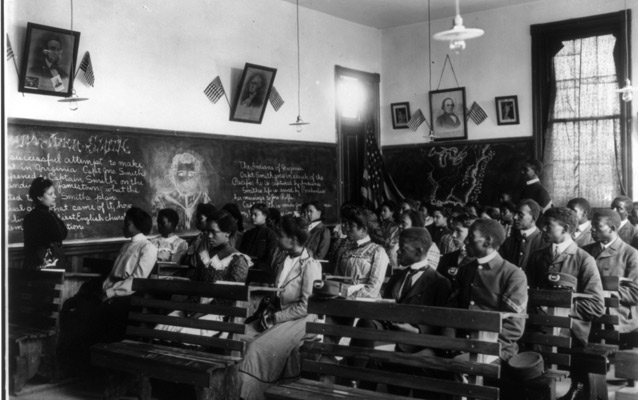1842– Cheyney University was created
1854– Lincoln University established
1856– Wilberforce University first established as a school and later became a degree granting institution.
1860– about 28 African Americans had graduated with a bachelor’s degree. Alexander Locus was the first documented black person to receive a degree in 1823 from Middlebury College.
 1865- 1890– Many large churches and missionary groups along with the Freedman’s Bureau established elementary and secondary schools that would later become Colleges and Universities.
1865- 1890– Many large churches and missionary groups along with the Freedman’s Bureau established elementary and secondary schools that would later become Colleges and Universities.
1870– during the early 1870s, the percentage of Black children enrolled in school was higher than that of whites.
1890– The Second Morrill Act provided equitable funding for Black land grant institutions and Plessy v. Ferguson established separate but equal doctrine which led to the growth of many HBCUs in the South.
1895– More than a 1,000 black people had graduated from Historically Black Colleges and Universities (HBCUs) by 1895.
1954– Brown v. Board of Education in which the Supreme Court ruled that separate but equal was not lawful.
1964– The Civil Rights Act banned discrimination in federally funded programs giving African Americans more access to other institutions of higher education. Prior to 1945, 90% of African Americans in College were enrolled in HBCUs in the South. By the mid-1970s, enrolment of African Americans increased significantly because of the expansion of federal policies that reduced barriers for minority and low income students.

Back Row: R. A. Thompson, J. E. Walker, R. B. Stamps, R. L. Houston, J. C. Barney
Front Row: L. V. Brownlow, A. L. Gray, Sarah F. Adams, Miss Duncan, A. H. Halfarce, D. W. McCall, H. K. Patrick
2013– black students accounted for 16 percent of the student body at Community Colleges, versus 11 percent in 1994.
2015– black undergraduate populations average 6 percent at top tier institutions, a statistic that has remained largely flat for 20 years yet 15 percent of Americans between the ages of 20 and 24 are black.
While African Americans continue to make strides in higher education, there is still more work to be done to increase overall enrollment and graduation rates. In addition, there is need to increase participation of African Americans at top tier institutions.




